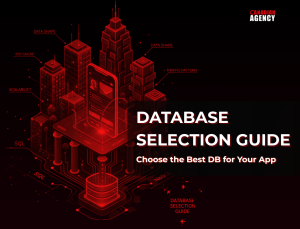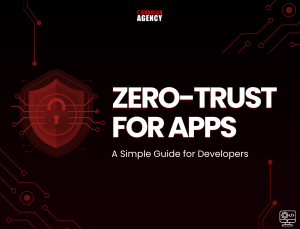The Android ecosystem has come a long way since its launch in 2008. What began as a simple mobile operating system has now become the world’s most widely used platform, powering billions of devices across smartphones, tablets, wearables, smart TVs, and even vehicles. As technology continues to evolve, so does the landscape of Android app development. From artificial intelligence to 5G connectivity and cross-platform tools, Android developers are stepping into an era where innovation and efficiency go hand in hand.
For businesses, this evolution presents both opportunities and challenges. To stay ahead in a competitive digital marketplace, companies must embrace the latest technologies, frameworks, and design practices shaping the future of Android app development. In this blog, we’ll explore the emerging trends, tools, and technologies redefining Android development — and what developers should expect in the years ahead. Whether you’re a business owner planning your next mobile app or a developer looking to upgrade your skills, understanding these shifts can help you build smarter, faster, and more future-ready Android applications.
1. The Rise of Kotlin as the Primary Language
Kotlin has rapidly become the go-to language for Android development. Officially endorsed by Google, it offers cleaner syntax, better readability, and greater security than Java. Its interoperability with Java enables developers to migrate existing projects seamlessly, while features such as null safety and coroutines make it ideal for writing efficient, error-free code.
In the future, Kotlin will continue to dominate Android development, supported by frameworks such as Kotlin Multiplatform, which enable developers to share code across Android, iOS, and web applications. This reduces development time and ensures consistency across platforms—a key factor for businesses seeking cost-effective, scalable mobile solutions.
2. Jetpack Compose and the Evolution of UI Design
Android’s UI design is undergoing a significant transformation with Jetpack Compose, Google’s modern toolkit for building native UIs. Instead of relying on XML layouts, developers can now use a declarative approach, simplifying UI creation and improving maintainability.
Jetpack Compose makes it easier to create dynamic, responsive, and visually appealing designs that adapt to different screen sizes and orientations — from smartphones to tablets and foldable devices. As more apps shift toward richer user experiences, Compose will be central to designing seamless and engaging interfaces.
For agencies and developers, adopting Jetpack Compose early offers a competitive edge — reducing development complexity while enhancing design flexibility.
3. AI and Machine Learning Integration
Artificial intelligence (AI) and machine learning (ML) are no longer futuristic concepts; they are now integral to modern app development. Android developers can leverage TensorFlow Lite and ML Kit to integrate intelligent features directly into mobile applications.
From voice recognition and predictive text to personalized recommendations and image analysis, AI enhances user experience and engagement. For example, fitness apps can analyze user data to offer tailored workout plans, while eCommerce apps can suggest products based on shopping behavior.
In the coming years, as AI models become lighter and faster, on-device processing will take precedence — ensuring real-time performance without compromising user privacy.
4. 5G Technology and Its Impact on App Development
The rollout of 5G networks is revolutionizing mobile app capabilities. With ultra-low latency and faster data transfer speeds, developers can now build feature-rich applications that rely on high-quality streaming, augmented reality (AR), and cloud-based functionalities.
For Android app development, this means more immersive experiences. Apps will be able to stream 4K content, support real-time gaming, enable faster cloud synchronization, and provide instant communication through video or voice calls.
As 5G becomes more widespread, developers will need to rethink app architecture to take advantage of faster connectivity and reduced loading times — delivering smoother, high-performance user experiences.
5. The Growth of Foldable and Wearable Devices
The Android ecosystem now extends beyond smartphones. Devices like foldable phones, smartwatches, and wearables have created a new frontier for app development.
Developers must now design apps that adapt to different screen configurations and device orientations. For instance, apps should transition seamlessly between folded and unfolded modes on foldable devices, maintaining UI consistency. Similarly, wearable app development — powered by Wear OS — focuses on lightweight, notification-driven experiences that complement smartphone functionality.
In the future, multi-device experiences will become the norm. Android developers will need to focus on adaptive layouts and cross-device continuity to ensure a unified user journey across all connected devices.
6. Cross-Platform Development with Flutter and Kotlin Multiplatform
Cross-platform frameworks are reshaping the way mobile apps are built. Flutter, developed by Google, allows developers to build Android and iOS apps using a single codebase, significantly reducing time-to-market. With its fast rendering engine and expressive UI components, Flutter ensures consistent performance and design across platforms.
Similarly, Kotlin Multiplatform is gaining popularity for businesses that want native-level performance while sharing logic between platforms. It bridges the gap between native and hybrid development, offering flexibility and scalability.
These frameworks are setting the stage for a future where developers can focus more on innovation and user experience rather than maintaining separate codebases.
7. The Role of Progressive Web Apps (PWAs)
Progressive Web Apps are becoming an alternative to native mobile apps — especially for businesses that want fast, reliable, and installable web experiences. PWAs combine the accessibility of websites with the functionality of native apps, offering offline support, push notifications, and smooth performance.
For Android users, PWAs integrate seamlessly with Chrome and the Google Play ecosystem. As storage-conscious users seek lightweight apps, PWAs will continue to gain popularity — particularly on content-driven platforms such as news, blogs, and eCommerce.
8. Enhanced Security and Privacy Regulations
As mobile usage grows, so do security concerns. Google has strengthened its policies to protect user data, and Android developers must comply with these evolving privacy standards.
Features like Scoped Storage, Biometric Authentication, and App Sandbox are already enhancing security across apps. Additionally, developers are expected to implement end-to-end encryption, secure APIs, and GDPR-compliant data handling practices.
In the future, Android development will require a deeper understanding of cybersecurity principles to maintain user trust and comply with global regulations.
9. Cloud-Driven Android Development
Cloud computing is transforming Android development by allowing developers to offload intensive tasks to powerful cloud servers. Cloud-based backends, like Firebase and AWS Amplify, enable real-time databases, authentication, analytics, and scalability without complex infrastructure setup.
As cloud integration becomes more seamless, apps will rely less on device storage and more on distributed systems. This approach supports faster updates, reduced maintenance, and enhanced collaboration between development teams — making it a core component of future Android app architectures.
10. The Growing Importance of Sustainability
Sustainability is becoming a significant focus in technology, and app development is no exception. Developers are increasingly building energy-efficient apps that consume less power, optimize background processes, and minimize data usage.
Google’s initiatives, such as Android’s Battery Historian and Energy Profiler, help developers monitor and reduce energy impact. In the coming years, sustainable coding practices will not only improve performance but also appeal to eco-conscious consumers.
Conclusion
The future of Android app development is being shaped by innovation, speed, and user-centric design. Technologies like Kotlin, Jetpack Compose, AI, and 5G are redefining what’s possible in mobile app experiences. Meanwhile, foldable devices, wearables, and cloud integration are expanding the Android ecosystem beyond traditional boundaries.
For developers, this means embracing continuous learning and staying up to date with evolving frameworks and best practices. For businesses, it means partnering with skilled development teams who understand both the technology and the market. The future of Android development isn’t just about writing code — it’s about creating intelligent, adaptable, and human-centered digital experiences.




